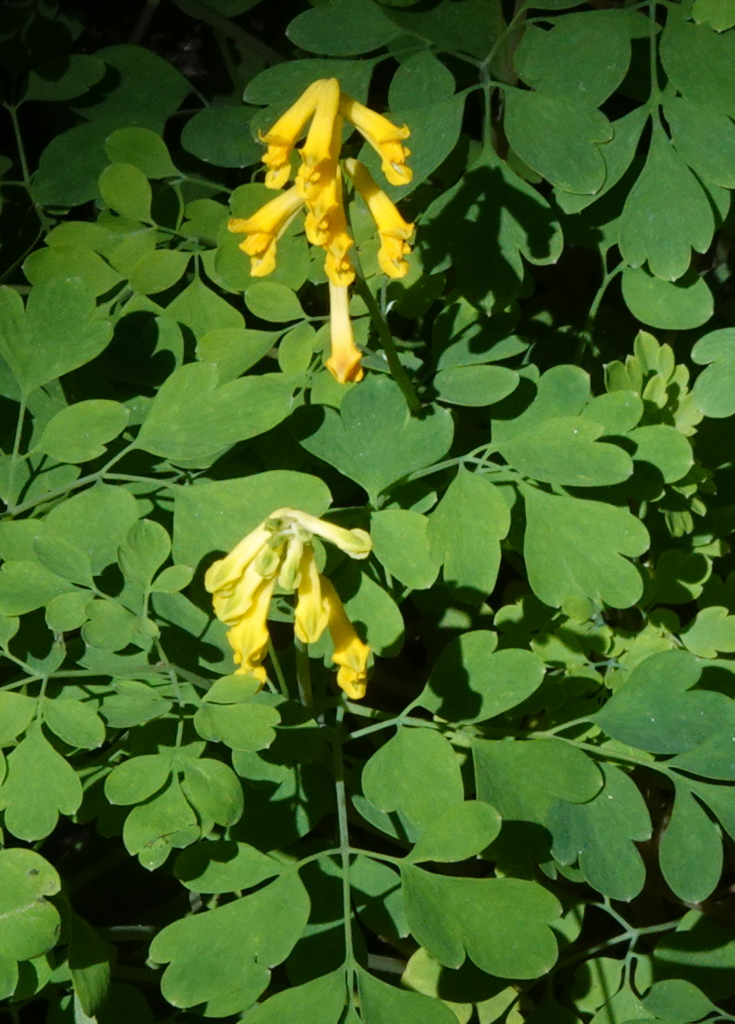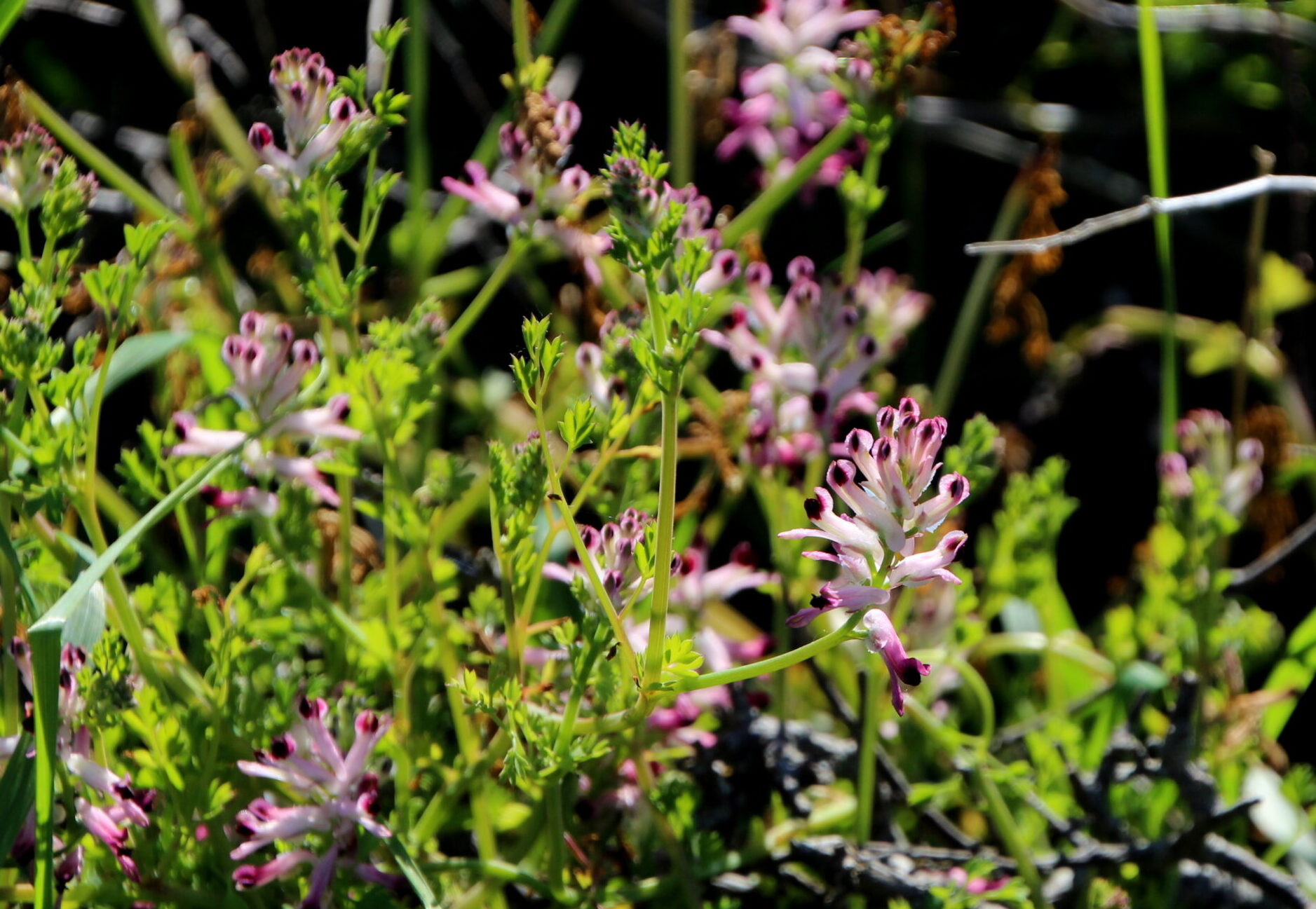Name nerd’s corner Fumaria muralis and others
Fumaria obviously relates to smoke in some way. As we have previously noted many botanical names in both Latin and modern languages were given by doctors, who had to know their botany. Before modern synthesised drugs most medicines (and poisons) were derived from plants.
It was Dioscorides a Greek physician practising in Rome during the 1st Century BCE who noted that the juices from these plants when dropped into the eye had an effect similar to that of smoke. He applied the Greek word kapnos (καπνοσ) which means smoke. Later physicians used the Latin Fumaria. It is still used in many herbal remedies and thus the Common Fumitory has the species epithet officinalis. It was also described as Fumus terrae “ smoke of the earth” because a large stand of the plants when growing on waste land can have the appearance of smoke rising from the ground when viewed from a distance, (do let us know if you ever see this!).
So Fumaria officinalis was probably imported here in Roman or early post Roman times and has become the most common Fumitory in the British Isles.
By contrast, the Common Ramping Fumitory is a native. It is the more common finding in East Sussex. Ramping is an onomatopoeic word, which in this context means spreading. Our specimen growing at the base of a wall is perhaps in a too cramped site to do do much ramping but it earns irs species epithet of muralis (of walls).
The very similar flowered Corydalis is a separate genus because the fruits show some differences. The name was introduced by the 16th century Physician and Botanist Castor Durante. He wrote a book describing all the medicinal plants he used or knew of (“Herbario Nuevo”) and it was tremendously popular. It went through several editions and Linnaeus would have known it well. Again we have to go to Greek κορυδαλλις which means lark from the supposed similarity between the flower’s spur and the lark’s beak.
Corydalis has become an English word now but it is also used in Botanical Latin for the group of uncommon non-native garden fumitories that have naturalised in B.I. The Yellow Corydalis is not one of them although it started off here as a garden plant and warrants its own genus Pseudofumaria. It looks like a fumitory but isn’t quite the same and the species epithet is lutea (yellow).
Finally the Climbing Corydalis with its tendrils Ceratocapnos claviculata has its own genus name. Linnaeus named this Fumaria claviculata (tendrilled) but this was altered to the present name by Magnus Liden. He is a contemporary Swedish Botanist at Linnaeus’ old University of Uppsala who has taken a special interest in Fumitories. We have already met the “-capnos” part of the genus name with Dioscorides above (but with a k!). Cerato usually means horn shaped and is describing the shape of the flowers. Ceratocapnos itself, was a name introduced by the early 19th C French soldier and botanist Michel Durieu de Maissoneuve who wrote particularly about the flowers in Spain and North Africa. Our native Climbing Corydalis is also found throughout Western Europe. Can we find it in the woodlands north of Seaford?
Brian Livingstone (livingstone484@btinternet.com)





